CARNICOLOR E.Morren, 1874
Synonym : Cotyledon carnicolor Baker (1870)
Series Racemosae
Type : Not designated.
Lectotype : Saunders Refugium Botanicum 3: plate 199. 1870.
Etymology : Lat. carnicolor = flesh-coloured, referring to the colour of the leaves, not to the colour of the flowers.
Distribution : Mexico (Veracruz).
First Description as Cotyledon carnicolor by Baker in Saunders's Refugium Botanicum 3: 199.1870:
Quite stemless and glabrous.
Leaves about twenty in a dense rosette, thicker in texture than the average of the section, oblanceolate-spathulate, the outer ones two inches long by three-quarters of an inch broad half-way up, acute, the haft three-eighths of an inch broad just above the base, the face concave, the colour a pale glaucous-green with a decided reddish tinge, the papillae more distinct than in any other species.
[Flowering] stems two or three from the crown of the root, arcuately ascending, not more than half a foot high including the raceme, densely leafy. Racemes six- to twelve-flowered, fifteen to eighteen lines broad, not more than an inch and a half to two inches long when fully expanded. Bracts linear, the lowest nearly as long as the pedicel, the upper much shorter. Pedicels erecto-patent, three to four lines long.
Flowers : Sepals lanceolate, subequal, subpatent, two lines deep. Corolla bright red when mature, distinctly pentagonal, half an inch deep, the divisons lanceolate, the outer stamens inserted near the base of the corolla.
Cytology : n = 18.
Note :
1. The origin of the plant Baker used for his description in 1870 was not known, it was believed to come from Mexico. It was only in 1906 that Purpus found it in the Barranca de Tenampa, Veracruz, Mexico.
As already stated above, the specific epithet carnicolor = flesh-coloured does not refer to the flower colour, it refers to the colour of the leaves.
2. Several decades later E. Walther wrote his own description of E. carnicolor from a plant said to be traceable to Rose's plants (Echeveria, 345, 1972). His description however differs in several respects from that of Rose, for ex.:
- the colour of the leaves is cress-green tinged drab - Rose however had described the leaves as more or less glaucous, of a decided bluish tinge with hints of pink and a decided metallic sparkle, and
- the colour of the flowers is "salmon-orange above, to flesh-color at base" – Rose indicated it as bright red or orange red.
Conclusion : Walther apparently ignored that the specific epithet ‘carnicolor’ referred to the colour of the leaves, not to the colour of the flowers. Needless to say that his description is useless and is to be ignored.
3. According to David Jimeno, plants seen in the wild in these days are never greyish or bluish-grey like the plants in our collections.
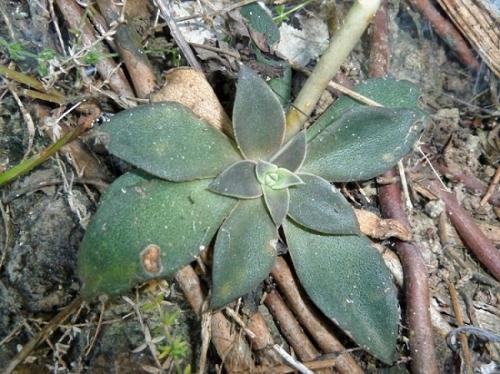
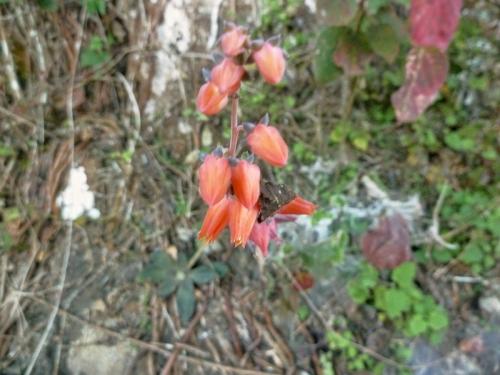
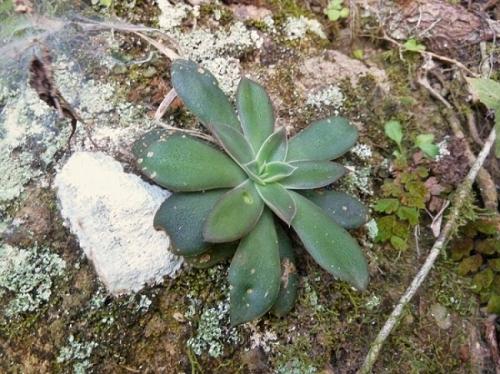
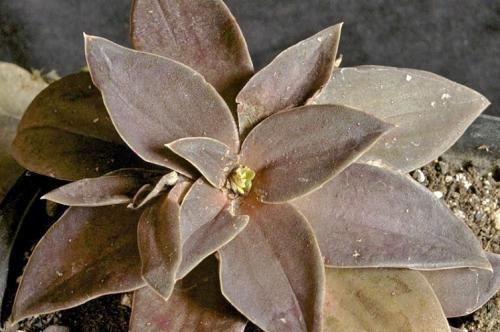
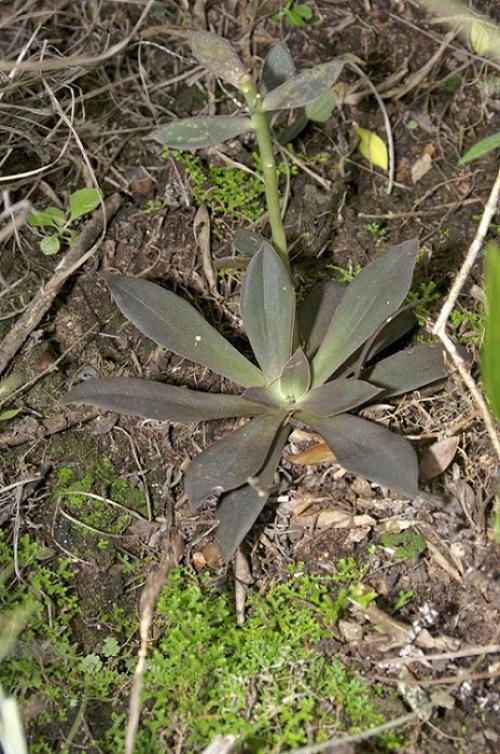
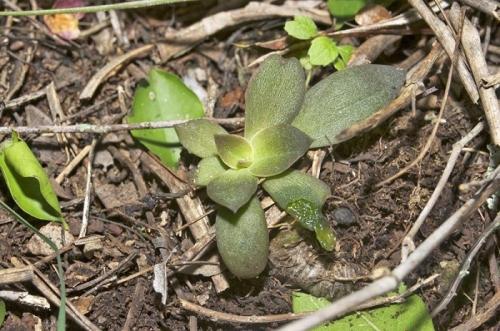
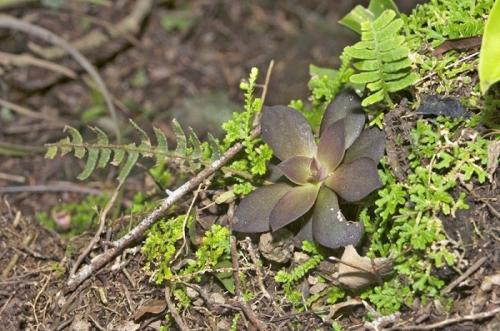
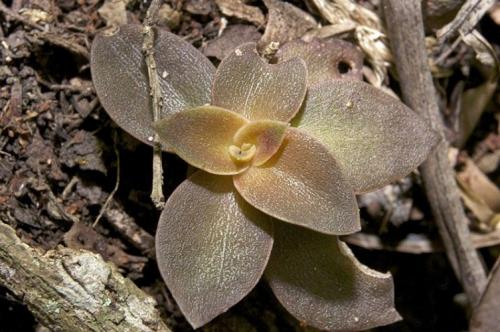
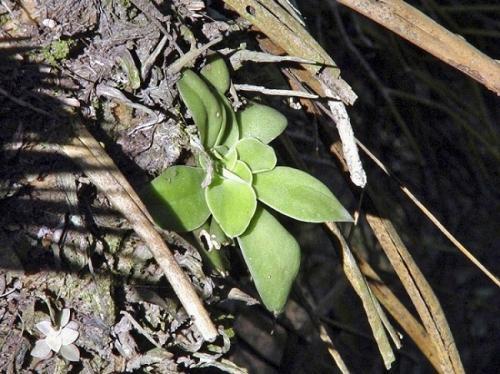
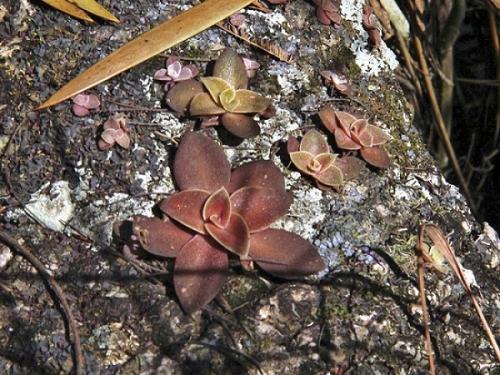
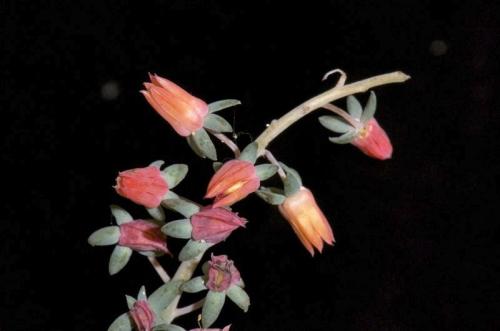
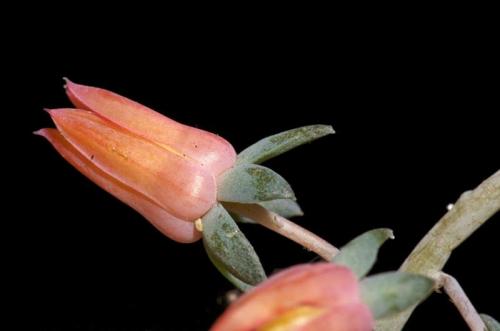
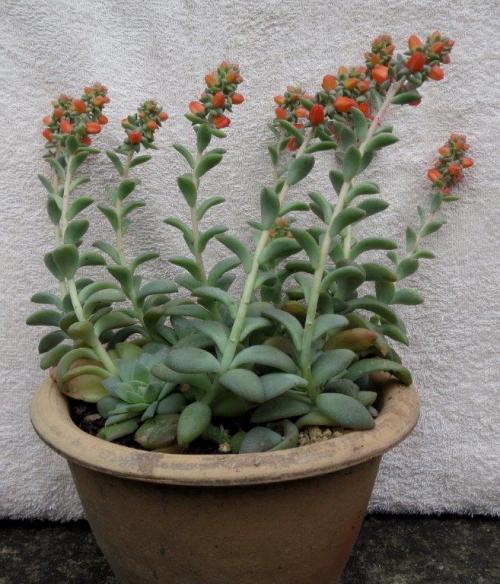
Photo Noelene Tomlinson
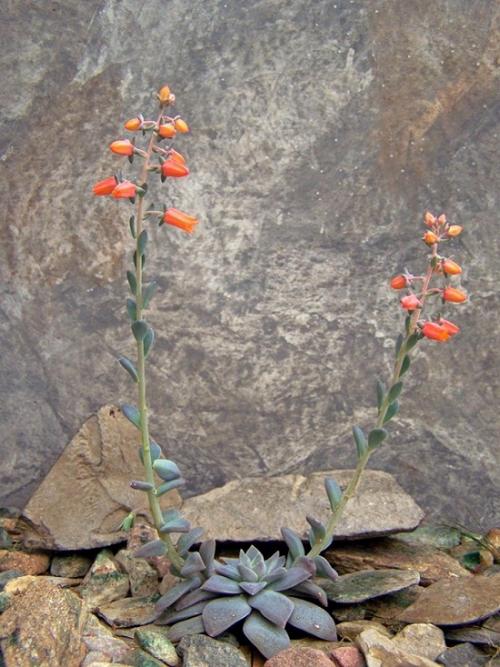
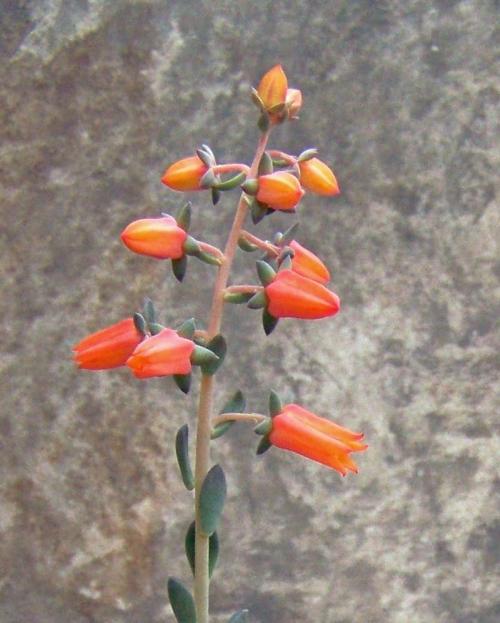
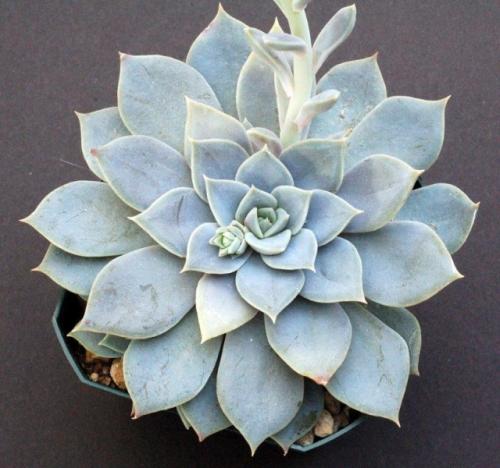
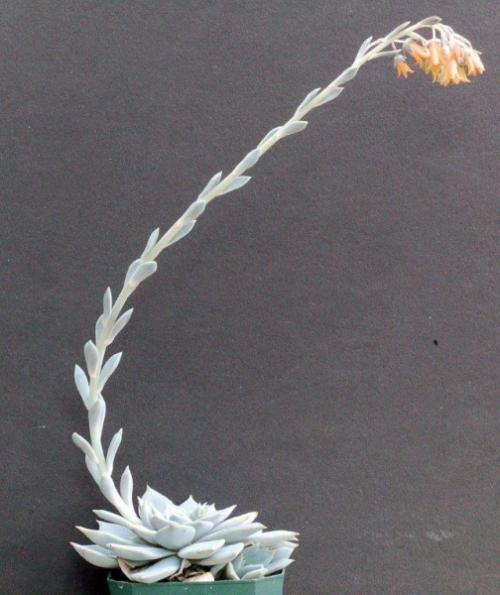
Photos Bernie DeChant
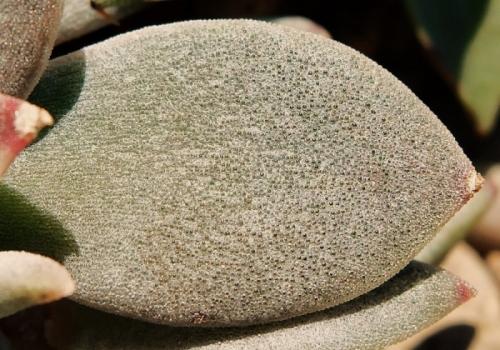
Photo Thomas Delange